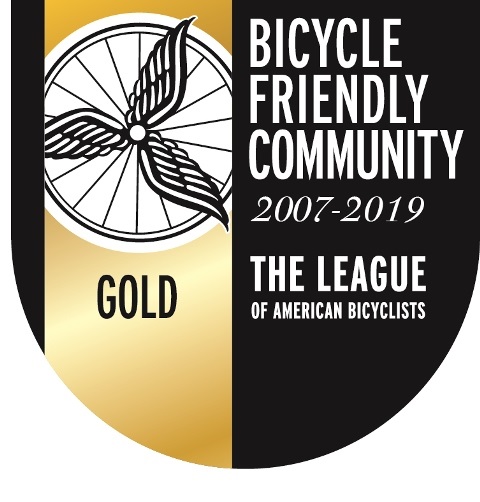Transportation Engineering

About
The Transportation Engineering division evaluates, proposes, and designs improvements to the City circulation system. It is responsible for the design, timing and coordination of the traffic signal system, and the installation and maintenance of bicycle/pedestrian facilities and programs. It provides professional engineering design for capital improvement projects related to traffic and parking. It also responds to citizen requests concerning traffic and parking and provides staff support to the Transportation and Public Works Commission and Downtown Commission.
Vision Zero
Vision Zero is a policy that supports the elimination of all traffic fatalities and severe injuries and increasing safe, healthy, and equitable mobility for all. This is done by acknowledging that traffic deaths and severe injuries are preventable and setting the goal of eliminating both in a set time frame, with clear, measurable strategies. In August of 2019, the City of Santa Cruz adopted a Vision Zero policy to eliminate all traffic fatalities and serious injuries on City streets by 2030.
Vision Zero Policy Information
Vision Zero uses a multidisciplinary approach focusing on the “six Es” as the guiding principles: Engineering, Education, Enforcement, Evaluation, Equity and Encouragement. A Vision Zero policy connects all existing efforts, identifies gaps of current efforts, and prioritizes implementation of a coordinated program.
The Vision Zero policy builds upon the City’s existing and ongoing efforts within a lens of equity. Current efforts to holistically approach traffic safety in the City of Santa Cruz include the following.
Evaluation
- A Local Roadway Safety Plan(PDF, 8MB) was developed that includes gathering, analyzing, utilizing, and sharing reliable data to understand traffic safety issues, to prioritize resources based on evidence of the greatest need and impact, and to evaluate the success of those efforts.
- Map of collisions for targeted approach.
- Ongoing reporting and monitoring through annual traffic safety reports which track traffic injury and fatality data.
- Active Transportation Plan: annual updates on implementation status to Transportation and Public Works Commission.
- Funding of projects driven by collision data.
Engineering
Engineering work is driven by a goal to improve roadway safety. Efforts focus on safety improvements with proven results at high collision locations and along high collision corridors with emphasis on construction of completely separated bike and pedestrian facilities such as the rail trail. Engineering uses data driven countermeasures to address roadway safety.
The following list outlines examples of City Projects that improve safety for motorists, bicyclists and pedestrians.
- Red curb painting to prohibit parking (daylighting) near intersections and mid-block pedestrian crossings in order to improve intersection safety (See Municipal Code 10.40.040)
- Citywide Traffic Signal Safety Upgrades
- Unsignalized Crossing Improvements
- Rail Trail Construction
- Street Safety Improvements
- Multiuse Paths
- Green Pavement Treatment
- Buffered Bike Lanes
- Sidewalk Infill
- Repaving Safety Improvements
- Private Development Safety Improvements
- School Safe Routes
- Sidewalks and Intersection Improvements
- Citywide Crossing Improvements
Education/Encouragement
- Safe Routes to School: City of Santa Cruz works with the City Schools and the Community Traffic Safety Coalition to provide traffic safety education classes, develop Safe Routes Maps for bicycling and walking to each school, and promotional events during Walk to School Day and Bike to School Day. The program helps children reduce their risk in traffic now and help build the foundation and knowledge that can make them safer in traffic throughout their lives.
- Partnerships: City of Santa Cruz awards grant funds to Ecology Action and County of Santa Cruz Health Services Agency to provide education and encouragement to all of the Santa Cruz City Public Schools.
- City provides funds for Bike to Work events and Open Streets Santa Cruz County.
- Support of RTC Bicycle Wayfinding Program which includes bicycle route signage and maps.
- The GO Santa Cruz program provides monthly education for bicycle safety.
Enforcement
- Targeted neighborhood, school zones and high collision corridor speed enforcement by Police Department
- School Crossing Guard Program
How Are We Doing?
Over the latest 5-year collision history (2017 to 2021) within the City of Santa Cruz (inclusive of State Highways) there have been 15 fatalities and 112 victims with severe injuries. The goal of Vision Zero is to bring the number of fatalities and severe injuries down to ZERO by 2030. Over the last few years, the overall trend for the number of fatalities and severe injuries as well as the number of victims at all levels of severity has been decreasing.
Permits
Oversize/Overweight Load Permit
All oversize loads entering the City of Santa Cruz must conform to the requirements set by the California State Department of Transportation (Caltrans).
In general, any vehicle over 10’-0” in width, 14’-8” in height, or purple weight class shall obtain an oversize load permit from the City of Santa Cruz Public Works Department. The purpose of the permit is to direct the vehicle to the most efficient route through the City of Santa Cruz to avoid damage to City facilities, unnecessary delay to traffic, and disruption to residential neighborhoods. Pilot car(s) shall be provided as required by Caltrans, determined during their permit process. If blocking 2 lanes of traffic during peak hours, a Santa Cruz Police Department (SCPD) escort may be needed. The SCPD charge for their services separately.
Fill out the form found below and e-mail your permit request to TEpermits@santacruzca.gov. Applicants are advised that two (2) working days advance notice is required to obtain an oversize load permit. The City of Santa Cruz charges transport/permit companies $16 for each oversize load permit. These fees will be billed by the City to the transport/permit companies every six months on April 15 and October 15. A 2-section manufactured home requires 2 permits, one for each truck load.
Transportation/permit companies are to attach the Caltrans Permit along with the City permit application. They are responsible for contacting the appropriate utility companies prior to oversize load moves.
Oversize/Overweight Transport Permit(PDF, 456KB)
Additional Information
Frequently Asked Questions